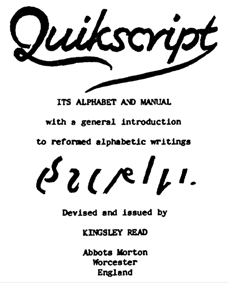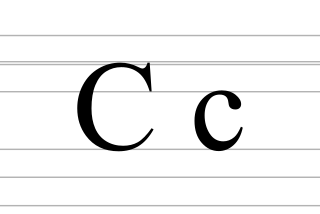Related Research Articles

Estonian is a Finnic language of the Uralic family. Estonian is the official language of Estonia. It is written in the Latin script and is the first language of the majority of the country's population; it is also an official language of the European Union. Estonian is spoken natively by about 1.1 million people: 922,000 people in Estonia and 160,000 elsewhere.

Fortran is a third generation, compiled, imperative programming language that is especially suited to numeric computation and scientific computing.

G, or g, is the seventh letter of the Latin alphabet, used in the modern English alphabet, the alphabets of other western European languages, and others worldwide. Its name in English is gee, plural gees.
Hexadecimal is a positional numeral system that represents numbers using a radix (base) of sixteen. Unlike the decimal system representing numbers using ten symbols, hexadecimal uses sixteen distinct symbols, most often the symbols "0"–"9" to represent values 0 to 9 and "A"–"F" to represent values from ten to fifteen.

Simula is the name of two simulation programming languages, Simula I and Simula 67, developed in the 1960s at the Norwegian Computing Center in Oslo, by Ole-Johan Dahl and Kristen Nygaard. Syntactically, it is an approximate superset of ALGOL 60, and was also influenced by the design of Simscript.

Quikscript is an alphabet which is intended as a replacement for traditional English orthography with the Latin alphabet. It is a compact phonemic orthography, designed to be comfortably and quickly written.

Ole-Johan Dahl was a Norwegian computer scientist. Dahl was a professor of computer science at the University of Oslo and is considered to be one of the fathers of Simula and object-oriented programming along with Kristen Nygaard.
A constructed writing system or a neography is a writing system specifically created by an individual or group, rather than having evolved as part of a language or culture like a natural script. Some are designed for use with constructed languages, although several of them are used in linguistic experimentation or for other more practical ends in existing languages. Prominent examples of constructed scripts include Korean Hangul and Tengwar.
Harry Max Markowitz was an American economist who received the 1989 John von Neumann Theory Prize and the 1990 Nobel Memorial Prize in Economic Sciences.

CACI International Inc. is an American multinational professional services and information technology company headquartered in Northern Virginia. CACI provides services to many branches of the US federal government including defense, homeland security, intelligence, and healthcare.
SIMSCRIPT is a free-form, English-like general-purpose simulation language conceived by Harry Markowitz and Bernard Hausner at the RAND Corporation in 1962. It was implemented as a Fortran preprocessor on the IBM 7090 and was designed for large discrete event simulations. It influenced Simula.

Ronald Kingsley Read was one of four contestants chosen to share the prize money for the design of the Shavian alphabet, a completely new alphabet intended for the writing of English. He was later appointed sole responsible designer of the alphabet.
Digitek was an early system software company located in Los Angeles, California, United States.
In a featural writing system, the shapes of the symbols are not arbitrary but encode phonological features of the phonemes that they represent. The term featural was introduced by Geoffrey Sampson to describe the Korean alphabet and Pitman shorthand.

C, or c, is the third letter of the Latin alphabet, used in the modern English alphabet, the alphabets of other western European languages and others worldwide. Its name in English is cee, plural cees.
Telefol is a language spoken by the Telefol people in Papua New Guinea, notable for possessing a base-27 numeral system.

Object-oriented programming (OOP) is a programming paradigm based on the concept of objects, which can contain data and code: data in the form of fields, and code in the form of procedures. In OOP, computer programs are designed by making them out of objects that interact with one another.
GASP, GASP II and GASP IV are FORTRAN-based simulation languages. GASP stands for General Activity Simulation Program.
References
- ↑ This article is based on material taken from QUIKSCRIPT at the Free On-line Dictionary of Computing prior to 1 November 2008 and incorporated under the "relicensing" terms of the GFDL, version 1.3 or later.
- "Quikscript - A Simscript-like Language for the G-20", F.M. Tonge et al., Communications of the ACM 8(6):350–354 (June 1965).